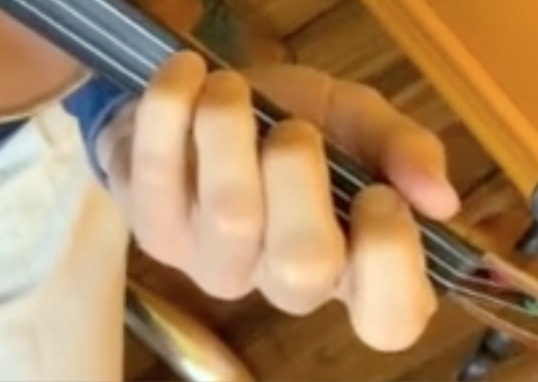The major scale structure
We play major scales all the time, but instead of just reading and playing the notes we've learned it's helpful to understand HOW the major scale is constructed.
We need to start by knowing that a half-step is the smallest written interval in western music, and that two half steps added together results in a whole step.
If you want a visual picture of this on a piano, check this out
The pattern of a Major scale is as follows: Whole-Whole-half-Whole-Whole-Whole-half. (WWhWWWh) The following example is in G Major

Seeing this on a piano is one thing, but what about on the violin?
If we look at the pattern of Whole and 1/2 steps on the fingerboard in G Major we see this shape:

You can see the larger gaps between fingers one-two and three-four, as well as between the nut (top of the string) and first finger. These are whole steps. Notice, hear, and FEEL the half-step between 2nd and 3rd fingers.

Likewise, if we are in a different key, for example, A Major, then we would see different hand shape because the pattern starts in a different place.
A Major (lower octave):

Notice, hear, and feel the half-step between 3rd and 4th fingers.

This is a start - keep listening and feeling the difference in your hand!

